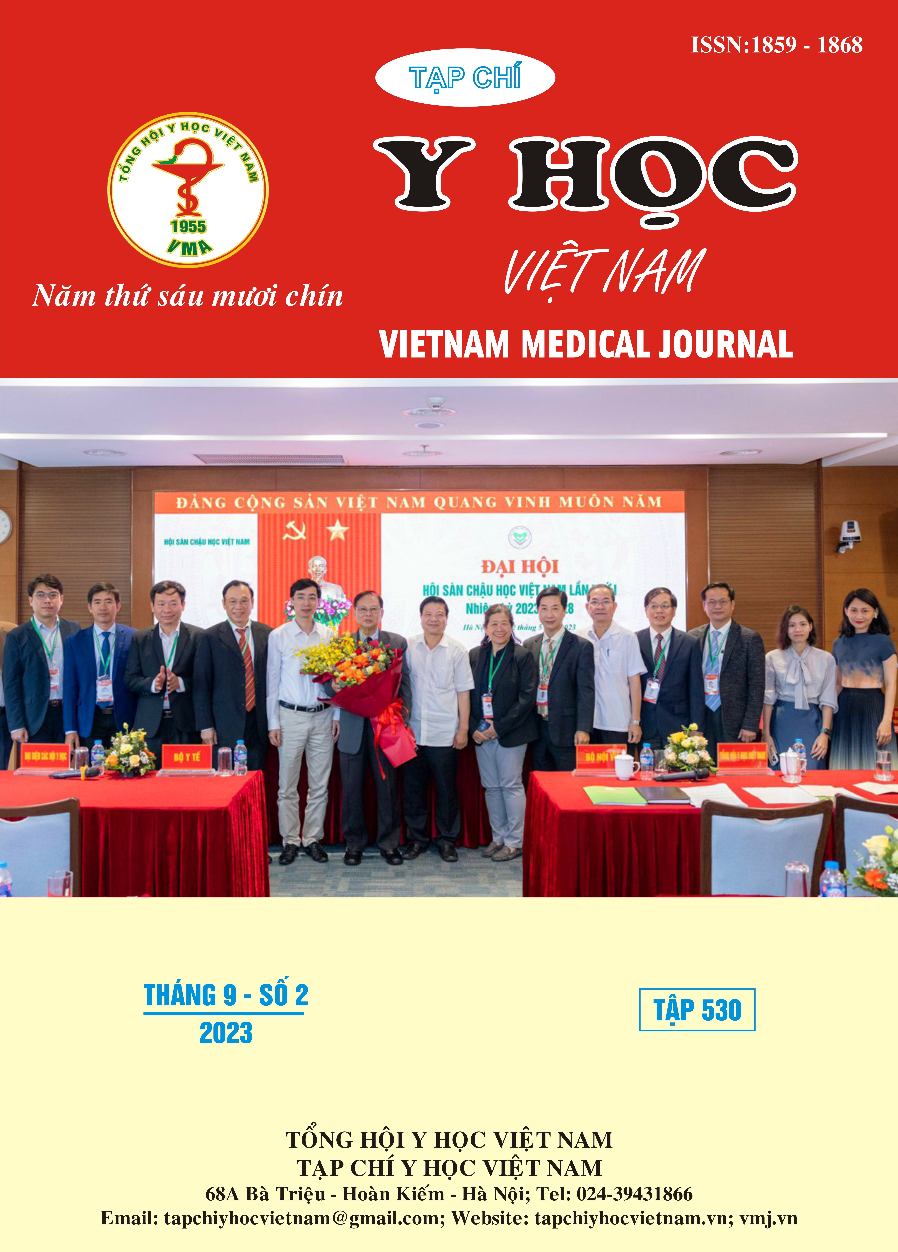SURVEYING TRADITIONAL MEDICINE BODY CONSTITUTION TYPES IN STROKE PATIENTS
Main Article Content
Abstract
Objective: Stroke is a dangerous disease that endangers patients’ health and lives. It is the world’s second leading cause of death in adults, after coronary heart disease. Stroke has a multifactorial cause, and understanding the risk factors, which include biological, environmental, and social behavioral factors, is critical for disease prediction and prevention. The study of traditional medicine constitution types is an unavoidable trend in the process of disease prevention and treatment on an individual basis. As a result, we conducted the topic “Surveying traditional medicine body constitution types in stroke patients” at some hospitals in Ho Chi Minh City in order to learn about the traditional medicine constitution types in stroke patients, which aims to help predict and prevent stroke patients. Subjects and Methods: From December 2021 to September 2022, 388 inpatients diagnosed with a stroke were surveyed at Thong Nhat Hospital, People’s Hospital 115, Traditional Medicine Hospital of Ho Chi Minh City, and Traditional Medicine Institute. The standardized Constitution in Chinese Medicine Questionnaire (CCMQ) is used to classify traditional medicine constitution types. Stata 14.2 software was used to compute statistics on background variables and ratios. Results: The rate of nine traditional medicine constitution types in stroke patients in the study sample, including Yang-deficiency: 24.57%, Yin-deficiency: 16.82%, Qi-deficiency: 15.69 %, Phlegm-dampness: 14.74%, Blood-stasis: 12.67%, Qi-stagnation: 7.37%, Dampness-heat: 5.1%, Inherited-special: 3.02% and Neutral: 0.00%. Conclusion: On stroke patients at Thong Nhat Hospital, People’s Hospital 115, Traditional Medicine Hospital of Ho Chi Minh City, and Traditional Medicine Institute, there are three most common body constitution types: Yang-deficiency, Yin-deficiency, and Qi-deficiency.
Article Details
Keywords
: stroke, traditional medicine constitution types.
References
2. Brainin M, Eckhardt R. Intracerebral hemorrhage. In: Brainin M, Heiss W-D, eds. Textbook of Stroke Medicine. Cambridge: Cambridge University Press; 2009:154-164.
3. GBD 2016 Causes of Death Collaborators. Global, regional, and national age-sex specific mortality for 264 causes of death, 1980-2016: a systematic analysis for the Global Burden of Disease Study 2016 [published correction appears in Lancet. 2017 Oct 28;390(10106):e38]. Lancet. 2017;390 (10100):1151-1210.
4. Liu J, Xu F, Mohammadtursun N, et al. The Analysis of Constitutions of Traditional Chinese Medicine in Relation to Cerebral Infarction in a Chinese Sample. Journal of alternative and complementary medicine. 2018;24(5):458-462.
5. Wu SG, He L, Wang Q, et al. An ancient Chinese wisdom for metabolic engineering: Yin-Yang. Microbial cell factories. 2015;14:39.
6. Xie G, Myint PK, Zaman MJ, et al. Relationship of serum interleukin-10 and its genetic variations with ischemic stroke in a Chinese general population. PLoS One. 2013;8(9):e74126.
7. Yao C, Wang L, Zhang J, et al. Immunotoxicity of hydrocortisone on Th1/Th2-related cytokine production is associated with yang-deficient state in traditional Chinese medicine. Cellular & molecular immunology. 2007;4(5):383-388.
8. Yao SL, Wang Q, Zhang ZZ, et al. Genome-wide association study on susceptibility genes associated with yang-deficiency constitution: A small sample case-control study. Chinese journal of integrative medicine. 2015;21(8):601-609.


